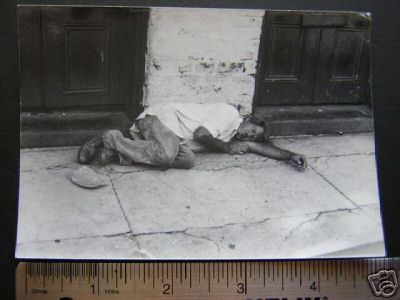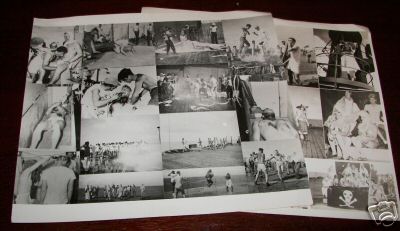Schwarz
View current page
...more recent posts
camp

the whitney museum / how is it american
It would be a kind of journalism where the camera would be behind the scenes and not have to rely on a narrator to tell the story. That precipitated a whole revolution in making documentaries. It still hasn't filtered down to news reporting, which is still an illustrated lecture. The advance was to get to life in such a direct way that when you saw the film you could judge for yourself.--Albert Maysles
Meanwhile, Mr. Cruz is collaborating with the artist Rebecca Solnit on a theoretical proposal for transforming a 70,000-square-foot McMansion in suburban San Francisco — built during the dot-com boom — into multifamily housing. Mr. Cruz believes that grotesquely overscaled houses across the country will eventually go through a similar process, although that time could be 50 years away.estudio
"It's the next ring of densification," Mr. Cruz said confidently of the mega-McMansions, "so we thought it might make a perfect test case. How do you retrofit them?"
Modernists in Portland Oregon convene here.
i would say a seventies firehouse would qualify


rockefeller apartments w54thst w55thst
rat rod pick of the week
STEVEN PARRINO
MUSÉE D'ART MODERNE ET CONTEMPORAIN
GENEVA
Through May 14
For Steven Parrino, the making of art in New York was—like life in the city itself—an unremitting, unsentimental negotiation between production and destruction. Taking as many cues from Warhol as he did from experimental music, this post-painter wrenched canvases off their stretchers, twisting them into glossy vortexes, and pummeled smooth Sheetrock panels with a sledgehammer. What's most American in Parrino's work are its automatic procedures, its blackouts, and its conceptual relationship with B-horror movies, underground comics, and noise. This retrospective includes more than two hundred works, ranging from paintings, drawings, and photographs that date from the artist's student years and his involvement with the Nature Morte gallery in the East Village to the collaborative film and music projects that preceded his fatal motorcycle accident in 2005.
—John Kelsey
And 70's music. I can hardly count the artists who are musicians or whose works are collaborations with musicians. Tony Conrad, Jim O'Rourke, Daniel Johnston, T. Kelly Mason, Spencer Sweeney, Steven Parrino. Parrino died last year. His enameled black-and-white paintings — like works by Malevich, if Malevich had come from the East Village — are uncompromising, and they were underrated when vacuous decoration came into vogue recently. I'm glad they have a spot here.kimmelman on the '06 whit bi - SP doesnt even catcha mention from saltz
![]()
Some family members argue that the site will be a target for new terrorist attacks, and that its underground location makes it difficult to escape in an emergency. "We know from 1993, and from 2001, that the terrorists love that site, and it will be a very attractive target again," said Debra Burlingame
wfmu online pledge map
ugly chile (you're some pretty doll)
U.S. PREMIERE!
IANNIS XENAKIS: LA LÉGENDE D'EER
Film by Bruno Rastoin (2004)
Played with 7-channel tape mixed live by Gerard Pape.
A very rare opportunity to see and hear this masterpiece of electronic music. An apocalyptical "multi-media" piece for the opening of the Centre Georges-Pompidou in Paris, LA LÉGENDE D'EER played for three months and was seen by thousands. Xenakis performed the electroacoustic 7-channel tape in a curvaceous architectural construction of his own design with a visual component including 1,680 lights, 4 lasers and 400 mirrors. The event was captured in over 350 slides by Rastoin – edited into a film that traces the music. This spectacle of light and sound creates a rich and unsettling environment, an unforgettable journey. Xenakis' associate Gerard Pape will mix the surround-sound experience live from the original master tapes.
![]()
tandemloc news letter
![]()
more shipping container housing from shipping container news
i love you

swinging

When New Orleans musicians play the old songs, what once came across as easygoing now carries a streak of bravado. Like other New Orleanians, many musicians have lost their homes, possessions and sometimes family members, and they are traveling long distances to play in their old local haunts. A song like "Do You Know What It Means to Miss New Orleans" now echoes with the knowledge that some natives of the city will never return. And there are new, bleaker resonances when a Mardi Gras Indian group like the Wild Magnolias sings the traditional song "Shallow Water Oh Mama," or when a brass band picks up the bouncy "It Ain't My Fault."
Vaughan's, a club in the Upper Ninth Ward, is too small for a stage. Mr. Ruffins, a trumpeter, has returned to his regular Thursday gig there after a long hiatus imposed by the storm, and he and his band were nearly backed against the club's wall by the dancing crowd. He was playing and singing old New Orleans songs like "Mardi Gras Mambo," with a jovial Louis Armstrong growl. Yet no one, onstage or off, has forgotten that the Lower Ninth Ward, still in ruins, is only a few blocks away.
Mr. Ruffins finished one set with a pop standard once sung by Bing Crosby, "Wrap Your Troubles in Dreams." Halfway through, in casual New Orleans style, he handed the microphone to an audience member, who belted the song — with a line about castles tumbling — and then held on to the microphone long enough to add, "That's for all the people that lost their houses."
Later, Mr. Ruffins agreed. "Those tunes take a whole different meaning now," he said. "At one time in the club, we would just be singing them. Now, I listen to the words."
It is the exhibition's stated ambition to reconfigure the history of sculpture since World War II (and its constant return to the example of Duchamp) that is more problematic. Leaving aside questions about what does not appear at the Wexner—the polemical exclusion of Pop and Minimalism, the limiting of the potentially far-reaching inquiry to only European and North American art—there remains the question of the historical model being implied here. Do we need more family-tree art histories, however ingeniously regrafted their branches, in which the ultimate referent of contemporary art is the work of a past master? A mental melding of Duchamp's erotic objects and his handcrafted readymade duplicates would indeed seem to license the exciting range of part-body, part-commodity creations gathered here. Yet Molesworth's emphasis on his patrimony risks implying that the condition for these objects' invention and importance rests with previous art, rather than with the way they work through the dilemmas of a half century in which people, places, and resources have been used as parts rather than valued as wholes—the dilemmas of a commercialized world where desire is routed through objects in processes that are anything but organic.
